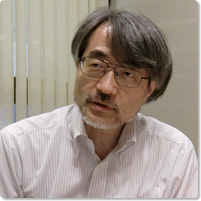Takashi Morishita

Takashi Morishita
Butoh was born in Japan as a new form of physical expression that overturned the conventional concepts of ‘dance’ and is known widely around the world today. Due to the long-term presence of Butoh artists like Akira Kasai and Ko Murobushi as instructors at the Centre National de Danse Contemporaine Angers (CNDC) and the many workshops held, Butoh has had a larger presence than many Japanese realize as a new form of expression in dance. It was Tatsumi Hijikata who gave birth to the art of Butoh, and 2011 marks the 25th anniversary of his passing. More than half a century has passed since Hijikata created and performed what is considered the first Butoh work in 1959, taking both its inspiration and title from Yukio Mishima’s short novel Kinjiki (Forbidden Colors). During this time, Butoh has not only been continued as a dance form in Japan but continues to have a profound influence on artists around the world, known by its original Japanese name. Today, the “Tatsumi Hijikata Archive” of the Research Center for the Arts and Arts Administration, Keio University in Tokyo has collected a definitive archive of materials on Hijikata and his art. This archive was established in 1998 with a core of the materials from the collection of Hijikata’s studio, the Asbestos Studio.
“Tatsumi Hijikata Archive” of the Research Center for the Arts and Arts Administration, Keio University
http://www.art-c.keio.ac.jp/

